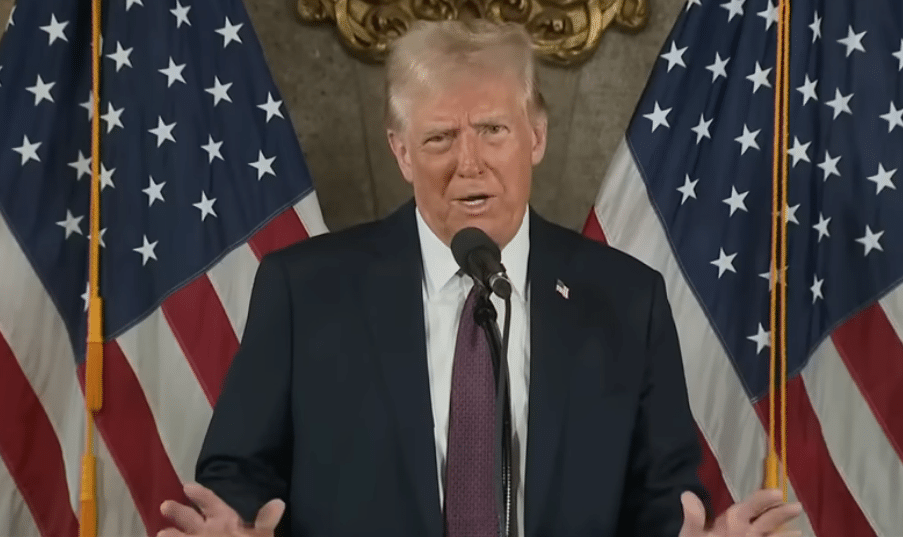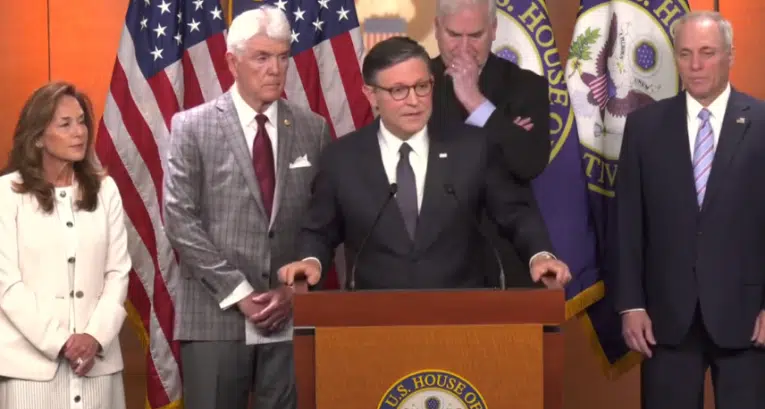
With President-elect Donald Trump due to be sworn in on Jan. 20, the first time since Grover Cleveland and president has served non-consecutive terms, all eyes are turning towards the Republican-controlled Congress and Trump’s proposed budget bill that will extend the 2017 tax cuts, enact regulatory cuts, cut spending, boost energy and other production, finish the border wall and otherwise secure the border.
In 2024, Republicans in addition to winning the White House also won majorities in both the House and the Senate with 219 to 215 seats and 53 seats to 47 seats, respectively. That means 2025 provides a ripe opportunity for Republicans to enact the Trump agenda — before the 2026 Congressional midterms come into view.
Particularly, given the narrow House majority of just 219 seats — Republicans initially started with 220 seats after the November election prior to the resignation of U.S. Rep. Matt Gaetz (R-Fla.) — it might not be a safe bet to wait too long to begin acting on important pieces of what Republicans were hoping to accomplish in Congress.
So far, the House led by Speaker Mike Johnson (R-La.) and Trump prefer a one bill approach, which gets everything done in a single budget resolution via the reconciliation process, which will only require simple majorities in both chambers to enact. Whereas some Senate Republicans would rather split the agenda into at least two budget bills, first acting on the border and getting to the economic policies including tax cuts later.
But waiting too long could be risky. For starters, one of the most pressing issues in the 2024 election, besides immigration, was consumer inflation, wherein incomes and wages failed to keep up with price increases for the entire term of office, leading to an overall disgruntlement that made re-electing either Joe Biden or Kamala Harris very difficult when voters considered whether they were better off than they were four years ago. Financially, they were not better off, by and large.
This makes the parts of the Trump economic and fiscal agenda to do with cutting spending (and therefore money printing), regulations and taxes — with an aim to boosting energy, food and other production to increase supplies — with the hopes of accelerating incomes will cooling prices, are incredibly important to showing action to fight inflation.
If prices experience any more spikes in 2025, and Republicans have not yet acted to boost production and cut spending, the very same political trends that disfavored Biden, Harris and Democrats in 2022 and 2024 could come back to hurt Trump and Republicans in 2026 and 2028.
Politically, the control of Congress also must be considered. There are special elections coming up for the House in New York and Florida to fill the seats of incoming UN Ambassador Elise Stefanik and National Security Advisor Mike Waltz and former Rep. Gaetz. A swing of all three seats, however unlikely, would result in Democrats reclaiming the House this year.
And then there is the 2026 midterms themselves, which tend to be perilous for the party of the White House occupant.
In midterm elections dating back to 1906 through 2022, the party that occupied the White House lost seats in the House 27 out of 30 times, or 90 percent of the time, and in years with losses those averaged 34 seats. The exceptions were 1934, 1998 and 2002, when the White House incumbent party picked up seats amid the Great Depression, the Monica Lewinsky scandal and 9/11 and the imminent Iraq War, respectively.
Of the years when losses in the House were experienced in midterm elections, 1962 was the least bad, when John Kennedy and Democrats only lost four seats, and 1922 was the worst year, when Warren Harding and Republicans lost 77 seats.
On the Senate side, the White House incumbent party lost seats 20 out of 30 times, almost 67 percent of the time, and in years with losses those averaged 6 seats. Here, there are more exceptions owing to only one-third of the Senate standing for election every two years, meaning the geography of which seats are up for grabs comes into play and the distinction between Republican and Democratic-controlled states becomes more important, and so does whether a Senator is retiring — incumbent Senators are harder to beat whereas open seats are easier to win.
The upside for Trump and Republicans in the Senate is that also means one time three, either no seats are lost or the incumbent party picks up seats, which actually happened in the last two midterm cycles, when Republicans picked up two Senate seats in 2018 and Democrats picked up one Senate seat in 2022.
While nothing is guaranteed, the overwhelming likelihood — 90 percent is nothing to sneeze at — is that Republicans will lose at least four House seats in the 2026 midterms, more than enough for Democrats to reclaim the House no matter what they do.
But stranger things have happened. Like 1934, in 2026, it could be that voters continue to blame the opposition party for the state of the economy even after they were out of power, for example. Or like 1998, the opposition party might overreach with investigations or attempted impeachments, leading to their defeat. Or like 2002, the American people rally around the incumbent party amid an unexpected war or other national emergency.
Anything’s possible, and so Congress still has to play the game no matter what the odds are. After all, some years’ losses of seats are worse than others and just a few times, there are gains.
In the Senate, holding onto the majority should be easier, with all of the Republican seats except for Maine where the popular Susan Collins is seeking reelection — she usually wins with bipartisan majorities — coming up in states that Trump won relatively easily: Wyoming, West Virginia, Missouri, Montana, Nebraska, North Carolina, Oklahoma, South Carolina, South Dakota, Tennessee, Texas, Louisiana, Kentucky, Kansas, Iowa, Idaho, Arkansas, Alaska and Alabama.
But once again, nothing is guaranteed, meaning if Republicans want to make the best show of progress to voters, they really should get to work on enacting as much of the Trump agenda in 2025 as possible — and don’t forget inflation. Once the midterms fully come into view and/or if the economy takes a turn for the worse, all bets could be off. Act now while the majorities last, Mr. President.
Robert Romano is the Vice President of Public Policy at Americans for Limited Government.





